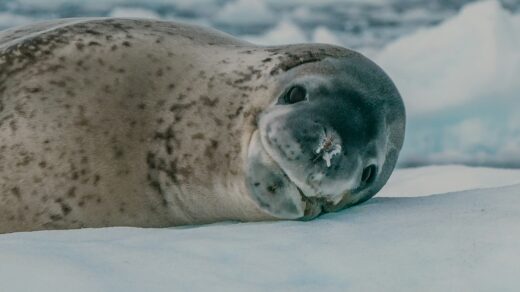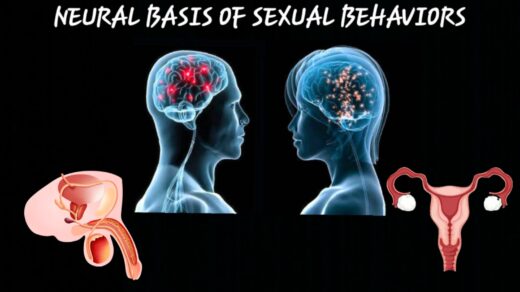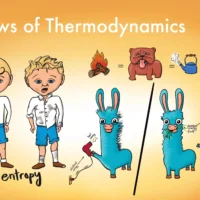Humpback Whales Struggle to Survive in a Human-Altered Ocean has less to do with changing climates and more to do with a hidden sensory weakness and due to poor vision. Despite their massive eyes, humpback whales are quite blind to the most dangerous threats introduced by humans: fishing nets, ship hulls, and other underwater obstacles. The anatomy of whales eyes reveals a hidden vulnerability one that may be silently killing these gentle giants.
They do not see the danger.
In a report which was published in Proceedings of the Royal Society B researchers report that which is put to question is the poor eyesight of the humpback whale, in particular their ability to see through or over obstacles like nets and ships. This isn’t a small scale issue of evolution may in fact be a large scale issue for the whale’s survival in today’s environment.
Marine biologist Jacob Bolin from the University of North Carolina Wilmington reports that although humpback whales have large easy to see eyes it is in fact below what we would think which is the case for their performance. Whales’ vision is a issue of not only poor resolution but also in how their eyes are formed and how they make sense of what little they do see.
A Big Eye Doesn’t Mean Better Sight
Humpback eyes do in fact have a large size, which may be quite an impressive trait at first look but what we see is that which takes up much of that space is a thick non visual tissue called the sclera. Also, what does do in terms of vision is the retina which isn\’t very dense in it’s collection of sensory cells. In that which regards the density of retinal ganglion cells which put visual info into the brain, this is very low.
At their greatest density we see in humpbacks which have only around 180 ganglion cells per square millimeter. In comparison we have in the human 35,000 to 40,000 and birds of prey may have over 70, 000. These ganglion cells are what we may call the eye’s pixels which determine how clearly an image is processed.
Bolin likens this low cell count to watching a film in ultra-low resolution—where everything is a blur, and details are nearly impossible to distinguish unless they’re extremely close. It’s no wonder that delicate, translucent fishing nets go unnoticed until it’s too late.

Simulating the Whale’s World
To explore how humpbacks visually perceive their environment, the research team used computer simulations to recreate typical underwater scenes. Two objects were modeled in grayscale the only spectrum humpbacks can see: a school of small fish, and a commercial fishing gillnet.
At distances beyond 150–200 feet (roughly four times the length of a whale), these objects quickly dissolved into vague shapes. The fish became an indistinct cloud. The gillnet? Practically invisible.
This discovery has chilling implications. If a whale can’t detect a gillnet even 100 feet away, avoiding entanglement becomes a matter of luck, not instinct.
Anatomy Preserved in Time
The whale eye which Bolin studied was from a juvenile humpback that beached in North Carolina in 2011.
This whale had not gone through the decomposition process which most stranding do it was put to sleep on land which in turn gave scientists a rare look at very intact whale anatomy. Humpbacks have poor eyesight.
Evolution Didn’t Prepare Them for Us
If their vision is so poor, how did humpbacks ever survive?
According to Dr. Lorian Schweikert a co author and sensory biologist which is what they are. Whales which at the time of evolution had open and obstacle free oceans which made eyesight a non issue. Also they do not have natural predators as adults and they use other senses like smell and perhaps vibrations to find prey.Unlike toothed whales like dolphins or sperm whales which have the ability to echolocate, humpbacks do not. Our preoccupation with whale acoustics has put the issue of their eyes in the shade, which is what Dr. Sönke Johnsen reported. Also a professor at Duke University he notes that we are only now to see that those large eyes of theirs do not in fact do well in the noisy dangerous waters we have created.
A Call to Make the Seas More Visible
This research doesn’t just answer a biological puzzle—it offers a potential path forward.
By better understanding how whales see—or fail to see—we can begin designing fishing gear that’s more visible in the whale’s perceptual world. Modifications in material, reflectivity, or pattern could help prevent entanglements. Likewise, knowledge of their visual limits might guide shipping practices or sonar alerts to reduce fatal collisions.
For a species that once roamed in peaceful blue, the modern ocean is a noisy, perilous place. And for animals that can’t see the nets and hulls closing in, a change in human behavior may be the only hope.

















